#ElectricCars
Despite Hurdles, Tesla Promises a Semi Truck for Thursday
Unbothered by the constraints of space and time, Elon Musk took to Twitter yesterday, breathlessly announcing a press conference for Thursday. Is the call’s topic set to address Model 3 production troubles? Or, perhaps, provide some insight into the supply chain woes at the Gigafactory? No, dear reader, nothing so mundane.
It’s to announce the Tesla semi truck, which is surely the most urgent topic and best use of resources at Tesla these days.
Let's Go All the Way: Chevrolet Bolt Increases Its Lead Over Faltering Volt
Never mind competing with EVs from other manufacturers. With each passing month, it becomes ever clearer that the all-electric Chevrolet Bolt competes directly with another General Motors stablemate: the Chevrolet Volt.
In October 2017, the Bolt — first sold last December and available nationwide since mid-summer — pushed into second place out of all plug-in vehicles sold in the United States, muscling out the Tesla Model X in the process. In doing so, it increased the sales gap between it and the range-extended Volt.
When buyers hit up a “dinosaur” legacy automaker for a green car, it seems they prefer going all the way — once-revolutionary gas generator be damned.
Tesla's Production Goals Are Starting to Look Unfeasible
We’ve debated Tesla Motors’ production ramp-up in the past, coming to the obvious conclusion that the automaker has a long road ahead of it before its proposed volume goals can be reached. The company knows this and Elon Musk has repeatedly said scaling up Tesla’s vehicle assembly will be akin to a kind of “production hell.”
However, we haven’t done a comparative analysis to extrapolate just how ambitious Tesla’s targets truly are. Half a million vehicles by next year is a lot of annual production for any fledgling automaker. We assumed the company would do its best and we’d see how close it came to the bar at a later date. But, with the Model 3 production getting off to an incredibly slow start, it’s worth looking at how far Tesla’s factory in Fremont, California, will have to climb to achieve the desired numbers.
It isn’t looking particularly good in the short term.
2017 Hyundai Ioniq Electric Review - Discount Club Membership
Governments big and small can issue far-off bans on gasoline and diesel all they want, but in the here and now, no one’s stopping you from taking home a Ford F-350 crew cab for family hauling duties. There’s no shadowy apparatchik barring the front door at the local Dodge dealership, preventing you from signing on the dotted line for that 392 Scat Pack or Hellcat.
Choice, glorious choice, awaits us all. Enjoy it while you can. For now, only the number of coins in our pockets (and maybe our parking situation) can keep those automotive love affairs at bay.
So, is it any wonder few people buy an electric car? The future’s electric, CEOs tell us, but high prices, low ranges, and a fledgling recharging network means EV ownership was mainly — at least until the Chevrolet Bolt came along — the domain of those dropping big bucks on Mr. Musk’s long-range wondercars. Destitute, but still achingly green? A used Nissan Leaf can haul your butt across town for a price rapidly approaching $0.
Is there room in this lopsided landscape for a new Hyundai with no exhaust pipe, a price lower than the competition, and a body that doesn’t scream “status”? If there is, can you live with it?
No Fixed Abode: Sorry, ISeeCars, but When It Comes to Electric Car Resale, It's Still Dog Bites Man
Over the past twenty or so years, I have come to firmly believe that the largest problem facing humanity is lack of consciousness. Sounds trite, doesn’t it?
But I’m not talking about “mindfulness” or “caring” or any of that New Age woo-woo. What I mean by “consciousness” is the same thing that Douglas Hofstadter means: the ability to temporarily step outside the actions you are performing, or the thoughts you are having, and consider them from a distance, as a whole. If you can’t do that — if you are unable or unwilling to occasionally evaluate your behavior, your preconceptions, and your desires as if they belonged to someone else — then you are truly no more intelligent than a dog or a computer program or a hurricane.
The conscious individual periodically steps out outside his situation so he can consider whether what he is doing makes any sense whatsoever. You can think of it as “the state of stuckness,” as Robert Pirsig did, or you can call it a “strange loop” as Hofstadter does, but you should learn how to do it. Without that consciousness, you will always be the victim of your environment and whatever information you consume. Lack of consciousness makes people susceptible to everything from autonomous-car crashes to investment bubbles to conspiracy theories.
In this day and age, one of the biggest pitfalls facing the unconscious among us is susceptibility to so-called “fake news,” which I will define here as any news that reinforces our beliefs and cherished ideas but which cannot stand up to even a modest bit of examination. Fake news is the processed sugar of brainfood and, just like processed sugar, we consume it because it makes us feel good in the short term. (Believe me, I know.) What follows is the story of a particularly tempting morsel of processed sugar. Call it a funnel cake, maybe, one that was eagerly consumed everywhere from The Drive to CBS News.
13 Burning Questions We Have for Volvo's 2020 Polestar 1
By nature, we’re skeptics. It’s in the job description.
Thus, while it’s hard not to fall in love with the idea of Volvo’s new 2020 Polestar 1 offspring — I mean, just look at it — we also know how hard it is to kickstart a new luxury brand, regardless of whether Polestar wants to sit far outside the luxury mainstream or right at the heart of the matter. We can’t help but wonder whether the Polestar 1 is not representative of the ideal luxury brand launch.
As doubters, as pessimists, as cynics, as preternatural killjoys, as wary realists, we have questions about this new upstart premium automotive entity. Many questions.
Betting On Green: Poland Plans to Open Largest Battery Factory in Europe
South Korea’s LG Chem is planning to open the largest lithium-ion battery factory in Europe to aide the continent’s automotive industry as it prepares its much-hyped shift toward EV production. According to LG, construction of the battery plant — located in Wrocław, Poland — is set to begin immediately and batteries should be ready for slotting into vehicles before the end of next year.
In a an announcement, the company said the plant would have a production capacity of 100,000 batteries per year for EVs that can run up to 199 miles once charged. Previous estimates were more conservative but, with German automakers promising widespread electrification, LG saw no reason for half measures.
“We will turn the Poland EV battery plant into a mecca of battery production for electric vehicles around the world,” said company president UB Lee. “As LG Chem’s Poland EV battery plant is the first large-scale automotive lithium battery production plant in Europe, it will play the role of vitalizing the electric vehicle industry across the whole of Europe. We will put all our efforts into making the plant into a main production hub for EV batteries.”
The Chevrolet Bolt Is Now Far More Popular Than the Chevrolet Volt
If plug-in hybrids were meant to function as a stop-gap between ICE-powered cars and fully electric cars, it may be time to consider Chevrolet gapless.
The Chevrolet Volt appeared in first-gen form in late 2010. By 2016, with the arrival of a second-generation edition, Volt sales climbed to record levels in the United States, albeit still not at the level GM originally hoped to see.
The Volt was and is a plug-in hybrid, an electric car with a range-extending gas-powered engine.
But with nationwide availability of the Chevrolet Bolt — change that V to a B for pure electricity — we’re now watching as Chevrolet Volt sales tumble. It turns out General Motors now has far more U.S. demand for its electric car than its ICE-accompanying electric car.
Any Takers? Nissan Toys With Leaf NISMO Performance Variant
Nissan appears to be considering adorning the Leaf with a NISMO nameplate and appearance. Unveiled on Monday at Nissan’s Futures 3.0 event, the stock 2018 model provides improved performance, range, and less nerdy looks. However, Nissan wants further improve the Leaf’s image with a NISMO-trimmed variant.
Oh goodie.
While we get that economy models can morph into fun-to-drive little darlings, we also scrunched our noses at Toyota’s performance-enhanced GR Prius last month. Not every car can be the next GTI and, if automakers would like to build something that could be, they’ll have to provide us with more than a bodykit and a set of custom wheels.
Finally, Mitsubishi Releases Pricing and Specs for the 2018 Outlander PHEV
Even though North American Mitsubishi sales have ticked upward in recent years, the current decade has not been kind to the brand. Volume is roughly a quarter of what it was just 15 years ago and the bulk of those deliveries come from the Outlander and Outlander Sport.
When your entire existence hinges on a couple of models, you do what you can to keep them relevant. While plug-in hybrids aren’t exactly a massive sales draw, they’re gaining ground and Mitsubishi’s Outlander PHEV bests most of its EV competition in Europe. Naturally, the automaker deemed it worthy of coming to America (on the slowest boat imaginable).
We know this exciting news probably has you squirming in your chair, covering your mouth as you utter uncontrollable squeaks of joy. But hold on, we haven’t even told you about the price.
Polestar Bids 'Farewell' to Volvo Cars
Polestar said goodbye to Volvo Cars over the internet this week. While we like what Polestar does, the social media posting is a slightly sanctimonious. The brand will undoubtedly continue to use Volvo cars as a base for all of its upcoming builds and persist under the same corporate umbrella. It would be a bit like AMG wishing Mercedes-Benz a fond farewell in 2005 and then continuing to use its vehicles.
They’re technically separate entities but both AMG and Polestar exist as a result of the core brand and operate under the watchful eye of a much larger company — Daimler for AMG and Geely for Polestar. The only difference is that the Swedish performance arm is, like Volvo, focusing on electrification for added power while the Germans continue with rip-roaring internal combustion powerplants without even a hint of EV adoption.
Just kidding. Mercedes-AMG’s director of vehicle development, Drummond Jacoy, already confirmed the brand has to “reinvent” itself when it comes to electric cars, promising mild-hybrid applications last Janurary.
California's Current Strategy to Ban Internal Combustion Engines
California has been toying with the idea of banning internal combustion motors for a couple of years now. While the concept is gaining popularity across the globe, the ban itself is a bit misleading. Regions in favor of the idea aren’t really pursuing an outright ban on engines that burn gasoline; they’re trying to mandate electrification and reduce emissions via non-traditional powertrains.
In April of 2015, California Governor Jerry Brown announced, “If the federal government can’t get it right, we in California are going to take care of business.” With the Trump administration making strides to roll back regulatory efforts, it appears the state of California is ready to pop in some Bachman–Turner Overdrive and begin taking care of said business.
Faraday Future Officially Ends Its Relationship With Nevada
The honeymoon is over before it even began. The State of Nevada is ending its relationship with automaker Faraday Future, which once promised to build a vast and glorious manufacturing facility within its borders — in exchange for tax incentives.
Eschewing construction of its $1 billion promise in North Las Vegas due to financial woes, Faraday was insistent that it was going to begin construction on a smaller assembly plant before tackling the rest of the build site. According to the company, a bijou factory was to be the first phase of a multi-stage approach intended to bring the FF 91 swiftly to market.
In July, Faraday Future announced it would be placing that project on hold as well, but remained committed to using the Nevada site for long-term vehicle manufacturing. Until then, it said it would shift its business strategy “to position the company as the leader in user-ship personal mobility — a vehicle usage model that reimagines the way users access mobility.” If anyone knows what that gibberish means, we’d love to know. It’s been several months and we still can’t decipher that sentence into useful information.
Production Porsche Mission E Priced Around $85,000 in 2019; 80-percent Charge Takes 15 Minutes
“It is very close to what you saw two years ago at Frankfurt,” Porsche CEO Oliver Blume says of the forthcoming production version of 2015’s stunning Mission E Concept.
“It will be exciting but a bit different from the concept,” Blume told CAR Magazine at the Frankfurt Motor Show.
That’s for beholders to gauge once the production version of the Mission E is pictured in 2019, when the model arrives exclusively with electric powertrains. Oliver Blume did, however, make clearer commitments relative to the Mission E that will delight Porschephiles and — perhaps — convert Tesla fans.
Right from launch, the Porsche Mission E — likely a 2020 model year vehicle — will be marketed with a 350 kW charge rate that “will be enough for a 400-kilometer range on an 80 percent charge,” Blume says. That’s 250 miles of range from a 15-minute charge. All of this in a car that Porsche claims accelerates from rest to 60 miles per hour in 3.5 seconds and tops 155 mph, a car Porsche couldn’t have developed “so quickly without the 919” — the automaker’s Le Mans-winning hybrid endurance racer.
BMW Concept Sedan, Slated for Production, to Bolster Electric Sub-brand
BMW showcased the i Vision Dynamics concept at the Frankfurt Motor Show this week — making it the third model for its i low-emissions electro-centric sub-brand. As a potential rival for Tesla’s Model 3, the i Vision Dynamics has all the hallmarks of an evolutionary automobile: an electric powerplant, absent grille, and the most boring name imaginable.
With windows tinted so black that you couldn’t tell if the sun was behind the wheel, the concept car is probably little more than a shell. We’ll take it at face value, noting that it exists as the physical representation of BMW’s promise to modernize as much as it does as a prototypical production model. However the automaker did say it will go on sale in 2021 — which is more than a little surprising.





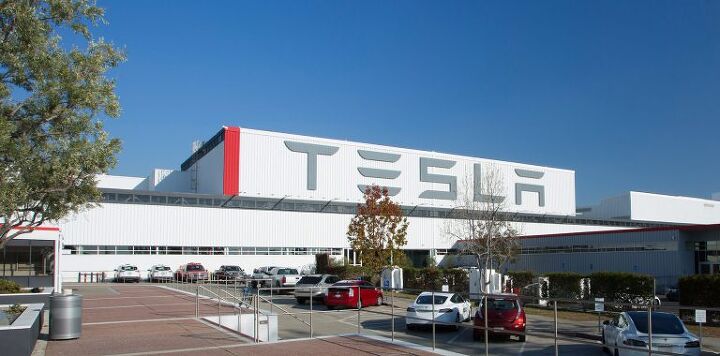




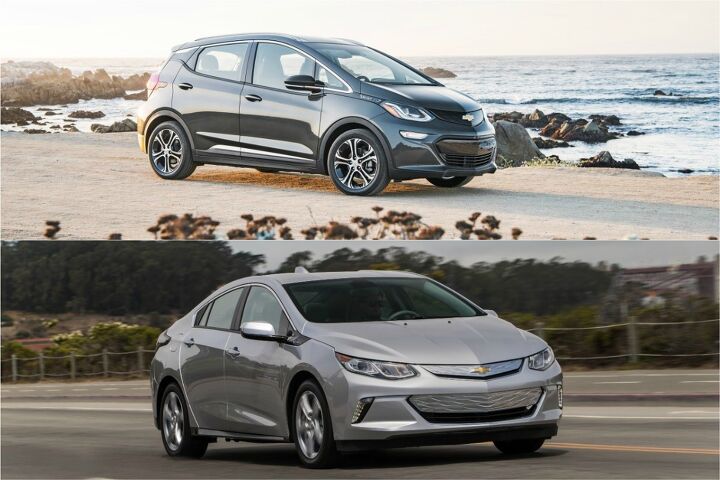


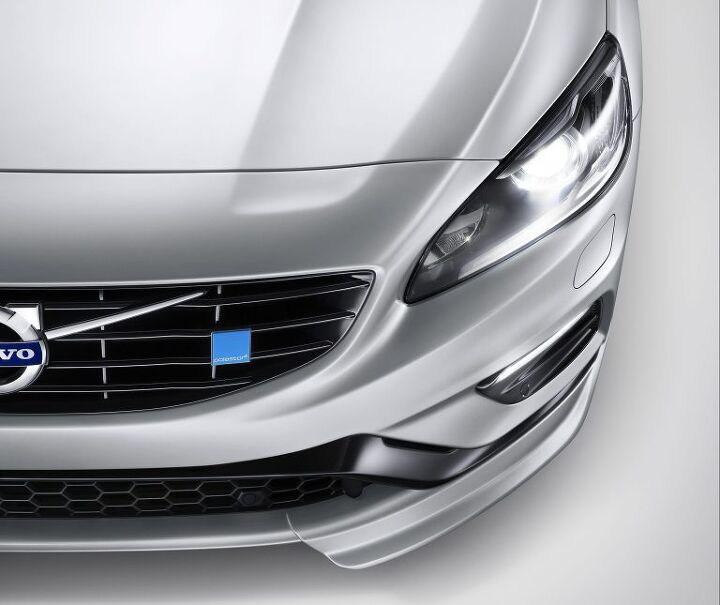
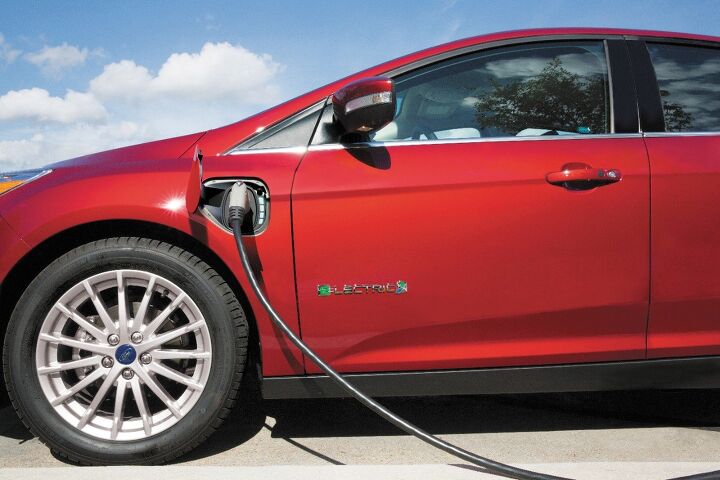
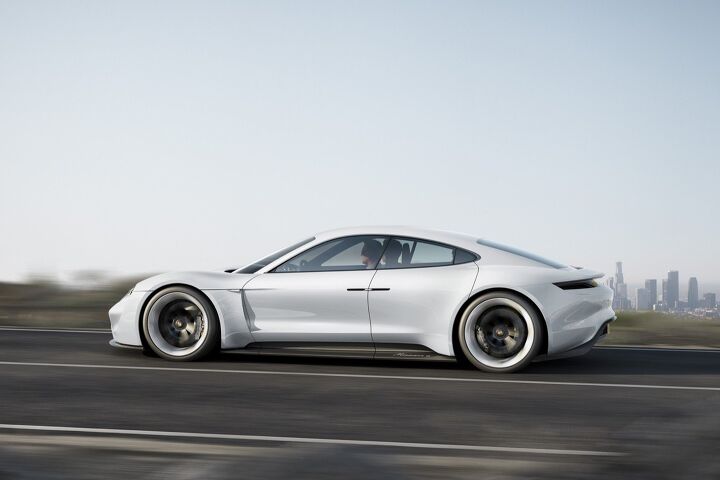
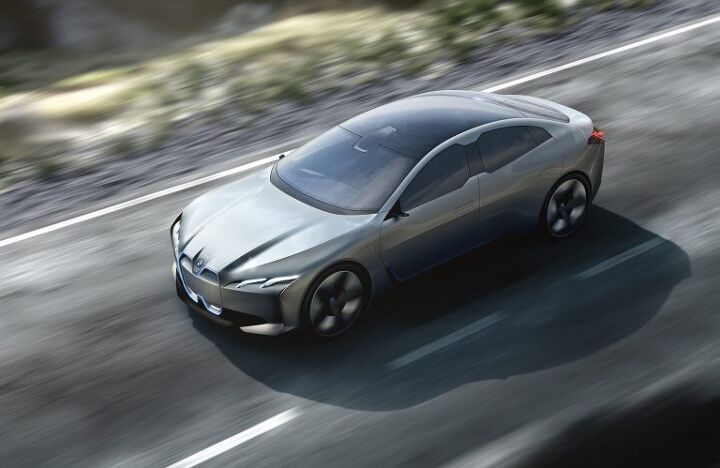












Recent Comments